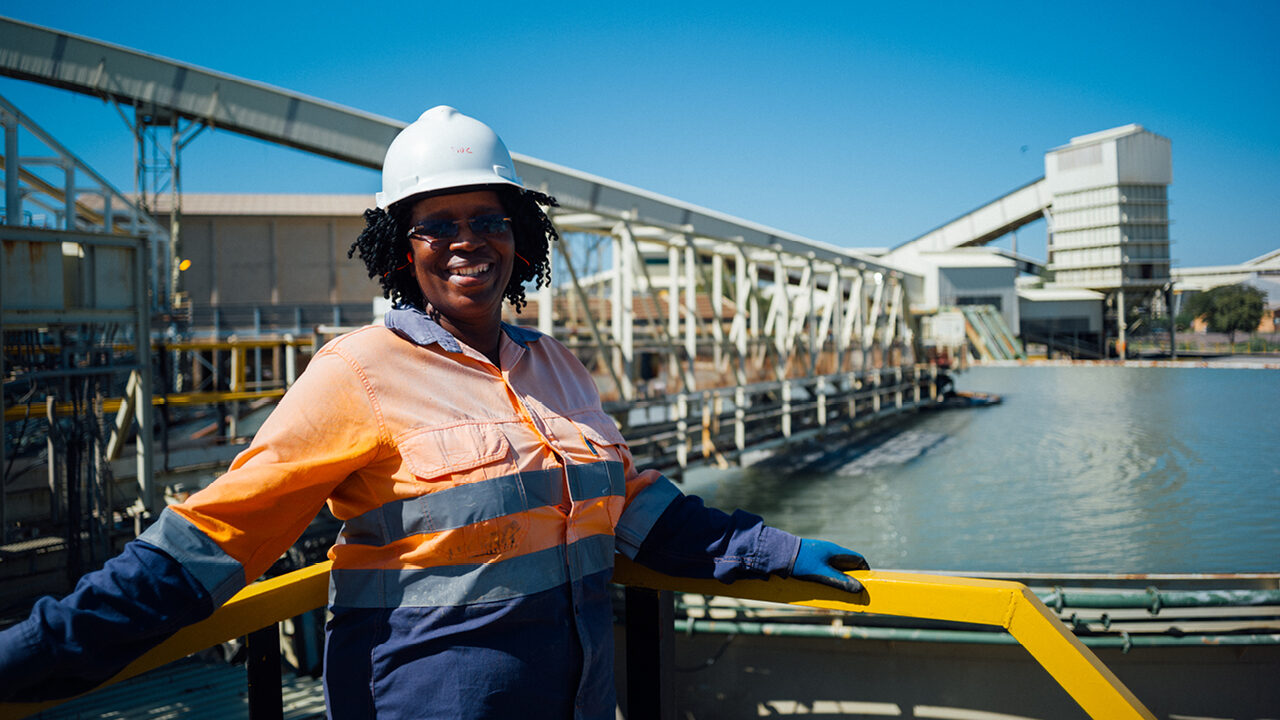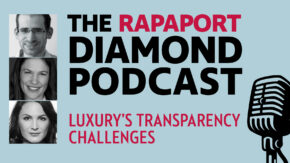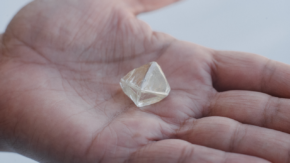Hard-luxury companies are accelerating their responsible-sourcing and sustainability efforts so they can meet consumer demand, comply with new legislation and ensure their long-term growth. But there is a lot yet to be done, and the costs of not embracing these practices are rising.
In the late 1960s, Philip Kotler’s seminal book Principles of Marketing introduced the “four P’s” that constitute a blueprint for any company: product, price, place and promotion. But the advent of more knowledgeable, demanding and engaged consumers calls for a revision. So businesses have added a fifth P: purpose. A company’s purpose is more than a consumer-facing mission. Investors see a firm’s environmental, social, and governance (ESG) credentials as intertwined with profit.
The latest financial reports from the largest luxury groups are a case in point: LVMH and Kering included a section detailing their ESG-related activity and progress, while Richemont issued a separate corporate social responsibility (CSR) report.
But which ESG areas are the most important for hard-luxury companies when it comes to consumer perception and long-term growth? And how far have these companies come? While ESG encompasses a broad range of topics, Federica Levato and Matteo Capellini — respectively senior partner and associate partner at Bain & Company — point to three key areas for luxury businesses: responsible sourcing and labor conditions, environmental sustainability, and transparency.
Monitoring the supply chain
The issues of human rights and labor practices in the jewelry business came to the fore at the end of 2020, when NGO Global Witness released a 48-page report alleging that rubies from the military-controlled state of Myanmar were ending up in the jewels of Place Vendôme brands. In the past, Global Witness exposed how the Taliban and other armed groups were earning millions with Afghanistan’s lapis lazuli, while the arrest of Horacio Triana, known as Colombia’s “emerald czar,” revealed Colombian emeralds’ complicated links to drug trafficking and the country’s paramilitary groups.
Unlike diamonds, which are controlled by a handful of large miners and regulated by the Kimberley Process, colored gems mostly come from a multitude of small artisanal mines scattered all over the globe, and pass through a tangle of dealers before ending up in jewelry. Supervising bodies like the Responsible Jewellery Council (RJC), the Coloured Gemstones Working Group (CGWG), the World Jewellery Confederation (CIBJO), the International Colored Gemstone Association (ICA), and the International Council on Mining and Metals, among others, have attempted to make the sector more transparent and accountable, but there seems to be no magic bullet.
Let’s not only ask where the gemstones are mined; let’s also ask, who are the companies and the executives running the mining companies?
Gemfields, the largest colored-stone miner, joined the Voluntary Principles Initiative on Security and Human Rights in 2020. The move aimed not only to improve Gemfields’ own image — it had come under fire for its labor practices in the past — but also to lead the way for other players in the colored-gem sector. The House of Gübelin has begun buying rubies from less problematic countries such as Greenland.
However, even in countries with ethical issues, there are responsible ways to source directly from miners, believes Susan Wheeler, founder of the Chicago Responsible Jewelry Conference. If one does purchase from conflict areas, Wheeler recommends thorough due diligence. “Let’s not only ask where the gemstones are mined; let’s also ask, who are the companies and the executives running the mining companies?” she says.
Large luxury groups still have a lot of homework to do on workers’ rights, according to the Sustainability Index that online media source The Business of Fashion published last year. Although it didn’t focus specifically on jewelry, the report rated the workers’ rights scores of publicly traded luxury firms. Kering scored 40 out of 100, Richemont 25, and LVMH only 19.
De Beers, which has full mine-to-market operations, is keen to declare its own ESG credentials. “Our diamonds are not only 100% conflict-free, but they have been ethically sourced to the highest health, safety, environmental and labor standards,” says Céline Assimon, CEO of De Beers Jewellers. For the past 15 years, the miner has employed “the strictest set of standards in the industry…covering all critical issues of ethical, social and environmental integrity,” she adds. Responsible sourcing is one of the core pillars of De Beers’ “Building Forever” plan — a set of 12 goals the company announced in 2021 to achieve by 2030.
The company also runs the GemFair program to regulate and improve the operations of artisanal and small-scale miners (ASM). The platform tracks diamonds and ensures that these mines respect international requirements for fair labor practices, worker health and safety, and environmental impact.
While GemFair’s stated aim is to promote the sector’s legitimacy and benefit the 150 million people who depend on ASM, the platform is not without its critics. In a 2020 study, Marc Choyt, president of New Mexico-based jeweler Reflective Jewelry, warned that GemFair posed the risk of letting De Beers dominate the diamond trade again as it did until a couple of decades ago.
The lab-grown question
Brands that use lab-grown diamonds often maintain that man-made gems are the only eco-friendly option. In 2021, Pandora announced that it was switching to lab-grown to improve its environmental practices. Last year, watchmaker Breitling declared the same move and motives, and many new jewelry brands that use solely synthetic diamonds are marketing themselves as sustainable.
Some take it a step further, dismissing miners’ own sustainability claims as “greenwashing.” “The notion of ‘sustainable mining’ is an oxymoron and particularly laughable,” asserts Martin Roscheisen, founder and CEO of lab-grown producer Diamond Foundry. “Mining, by definition, depletes a resource, and not doing so is the Merriam-Webster dictionary definition of ‘sustainable.’”
That said, “lab-grown diamonds aren’t necessarily sustainable,” remarks Pierre Dupreelle, global leader of customer behavior for Boston Consulting Group (BCG). While some producers, like Diamond Foundry, rely only on renewable energy to power their diamond-growing machines, others are still using less-sustainable forms of energy.
Moreover, the production of lab-created diamonds involves methane and hydrogen. The former comes from liquefied natural gas, and Europe produces the latter from natural gas, though China gets its hydrogen from coal, according to a 2021 report by ESG-focused service provider Sphera. The United Nations Environment Programme has identified methane as one of the leading causes of climate change — though the Sphera report notes that the synthetic-diamond industry contributes only a negligible amount.
Conserving their resources
While Assimon acknowledges that mining exploits natural resources, she stresses De Beers’ engagement with the environment. “Most people don’t know that for every hectare of land affected by mining activity, De Beers sets aside six hectares for conservation, totaling 200,000 hectares — two-and-a-half times the area of New York City,” she says.
Meanwhile, Kering halved its environmental footprint between 2015 and 2022, according to its financial report, and created the Climate Fund for Nature last year to support biodiversity restoration and conservation. LVMH plans to use recycled materials for 70% of its packaging as part of its LIFE (LVMH Initiatives For the Environment) 360 program.
At Breitling, clients welcomed the company’s switch to smaller, foldable, upcycled packaging, reports sustainability head Aurelia Figueroa. “We kept the traditional packaging as an alternative and offered our customers the choice. But it showed that less than 1% asked for the traditional watch box.”
Proving their metal
If advances in sustainability have so far been the fruit of companies’ own initiatives, new laws seek to bring more transparency to consumers.
In January, the European Parliament approved the Corporate Sustainability Reporting Directive, which demands thorough monitoring of companies’ supply chains, holding them accountable at every step of the process.
New technologies ranging from blockchain to artificial intelligence (AI) have dramatically increased transparency for diamonds and gemstones at major jewelers; The Business of Fashion Sustainability Index 2022 gave high transparency scores to Kering and LVMH — 74 and 52 out of 100 points, respectively, for this category — though Richemont received only 15.
Tracing gold — the most fundamental element in jewelry — still proves a challenge, however.
In March last year, the Global Gold Transparency Initiative warned brands about the risk of unwittingly funding Russia’s war on Ukraine by not conducting a thorough overview of their supply chains.
But brothers Charlie and Dan Betts, whose family has traded and refined gold since the 1700s, believe that Single Mine Origin (SMO), the new standard they created in 2018, is the solution to obtaining traceable gold.
SMO applies a chain-of-custody protocol at two sizable mines in Mali and the Ivory Coast. A third mine in Guinea will become operational by mid-2023. The SMO gold goes to a partner refinery in Switzerland, where it is segregated and refined separately from other gold bars. The process can be monitored via a QR code.
London-based jeweler Boodles was among the first to transition to SMO gold in 2018, followed by Garrard and Shaun Leane, among many others. The SMO kitemark affirms that the gold is from mining companies that pay workers a fair wage and have no ties to conflict.
In its recent sustainability report, Richemont mentioned its commitment to source 100% of its gold from traceable sources. The group is also partnering with Swiss Better Gold, an organization that facilitates artisanal and small-scale gold miners’ access to international markets.
A structural turnaround
Some critics still maintain that initiatives like these are mere public relations stunts — especially considering the top three luxury groups’ poor scores in The Business of Fashion Sustainability Index. Running a sustainable business goes beyond isolated initiatives; it demands structural and operational changes.
“To really make a change, the industry needs to consider the supply chain as a value chain,” asserts Leanne Kemp, founder and CEO of blockchain company Everledger, which provides traceability technology for the trade. “This means considering every aspect of a product’s life — the impact each of the supply chains is having [on] the production process” — and restructuring the company’s operations to incorporate ESG strategies.
Everyone must get involved, she believes: “The responsibility for ESG practices should be shared throughout the entire organization, rather than a single C-level role hidden within the marketing department or alongside procurement.”
Naturally, a structural turnaround implies costs. Ethical practices challenge companies’ bottom lines, says Dupreelle. “There is up to a 20% to 25% cost increase when switching to Fairtrade gold to ensure it is mined in ethical conditions. The effect is the same with responsibly mined gemstones, which have an average cost increase of 10% to 15%. The question remains as to how much of these costs customers will be willing to absorb.” Larger and established luxury brands have a greater ability to adjust to these changes, he adds.
And it’s not just the monetary costs. Besides being more expensive, recycled materials require additional traceability efforts to guarantee their sustainable origins, explains Dupreelle. The monitoring also needs to reach sub-suppliers to be truly meaningful, and this requires investment in technologies. In the creative department, designers have to retrain to adopt sustainable practices.
Yet the costs of not implementing sustainable practices are rising, Dupreelle warns. Governments are cracking down on companies’ transparency and emissions with new laws and taxes. ESG criteria matter not only to consumers, but also to prospective employees. When looking for work, 40% of millennials check firms’ ESG records, according to a recent BCG study. So do financial institutions, which offer better deals to companies with good ESG scores.
As Assimon says, “sustainability is no longer [just] nice to have, but core to every business.”
This article is from the March-April 2023 issue of Rapaport Magazine. View other articles here.
Main image: Dorcas Masilo, shift coordinator at a processing plant water reserve at De Beers’ Orapa Mine in Botswana. (De Beers)
Stay up to date by signing up for our diamond and jewelry industry news and analysis.



